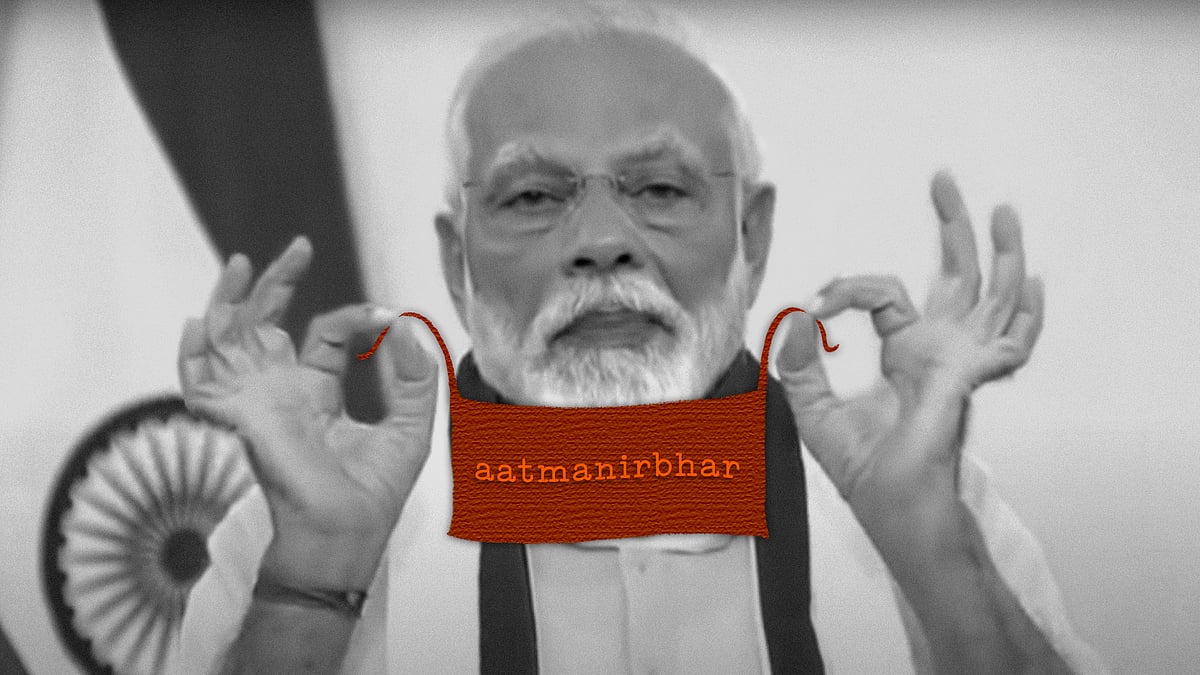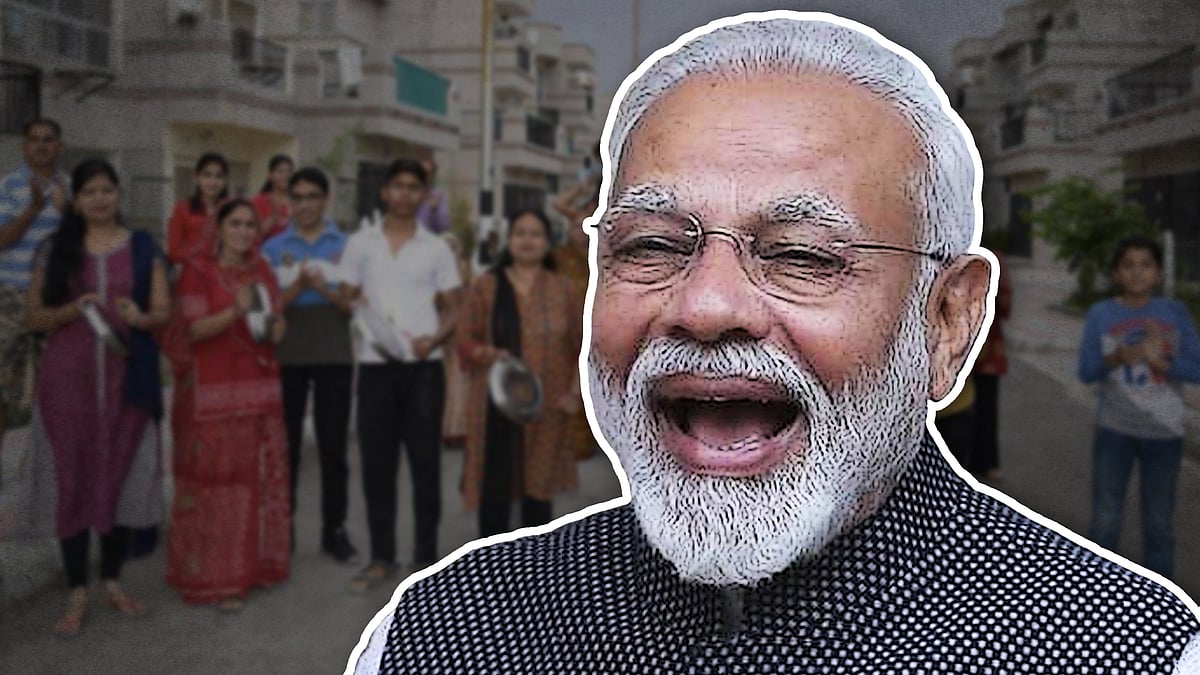Wonders of a bal mitra mind: Why does Modi always pick the non-democratic solution to any problem?
At a time when there is a little faith in democratic institutions, this adds a further layer of distrust.
It was around this time last year when the prime minister gave his “atmanirbhar” speech which, along with “vocal for local”, became a buzzword for his cabinet, the BJP, and the media which has, throughout his two terms, been very gracious towards him. While one can hardly call out a leader for talking about becoming more self-reliant, it was still jarring to see him talking about self-reliance at a time when millions of migrants were walking home on foot due to the lack of state-based assistance. These are people who are “nirbhar”, or dependent, on the state’s welfare safety nets, but they were left to look after themselves.
It was aligned to this atmanirbhar tune that the Indian Covid vaccination programme began and the process, from a scientific standpoint, raises more questions than answers.
Most vaccines are cleared for public use only after their phase three trials and efficacy are reviewed. In the case of both India’s indigenous vaccines, Covaxin and Covishield, this data wasn’t reliant enough to go public with. But, at the end of the day, the whim of the leader won.
It was this same whim that initially prioritised the export of vaccines as part of some soft power diplomacy. This would generally be a great way to expand India’s goodwill but it’s now created an acute shortage of vaccines in India, forcing India to finally open its doors to international vaccines.
What is up with atmanirbharta?
In a previous piece, I argued that Modi’s speech on atmanirbharta was nothing but a carefully crafted message to soothe the egos of India’s upper caste middle class that feels pride in arbitrary achievements like building tall statues and large cricket stadiums. I also argued that in a country that was facing a migrant crisis at the time, talking about atmanirbharta reeked of apathy.
 Caste, bigotry, and the apathy of Modi’s theory of atmanirbharta
Caste, bigotry, and the apathy of Modi’s theory of atmanirbharta How I learned to stop worrying and fell in love with our supreme leader
How I learned to stop worrying and fell in love with our supreme leaderSince then, however, the actions of the prime minister, and the response to that by the media and broader public that supports him, has only confirmed my assumptions. This ranges from the heavy-handedness response to the farmer protests, to Modi’s strange interactions with children about exams, given many Indian children to do not have access to online schooling, to the hypocrisy of our country’s leadership to carry on with mega election rallies without masks and allow the Kumbh Mela to take place even as people are dying.
And then there was this speech on April 20, as India grappled with one of the steepest rises in Covid cases and the acute breakdown of our healthcare system. It was perhaps with a lot of hope that Modi’s supporters switched on their television sets at 8.45 pm to listen to his address to the nation.
Over the last year, Modi has appeared multiple times on screens for similar addresses. While people were able to see the lighter side of his bluster during the early days of the pandemic, it’s getting tougher to focus on his speeches which are usually accompanied by very little, if any, meaningful action.
Of course, most of those who have understood the inner workings of the mind of our Supreme Leader realise that he is a man of broad brushstroke ideas and simple, catchy slogans; that his worldview is shaped by basic ideas and a disdain of expertise. But Modi’s words can sometimes even catch them by surprise, like it did to me. Bringing up atmanirbharta and bal mitra when the country is dealing with its toughest trust deficit in democratic institutions begs the question as to exactly how unburdened the prime minister is of any gravity of thought.
Bal mitra is the direction of our democracy
But, you may ask, what is “bal mitra” anyway?
Before we get to that, let us look at some of the core ideas around which democracy and a democratic system are built.
Essentially, beyond voting in your favourite leader, being part of a democracy means that you have signed an invisible contract with the state; that you will follow the laws and regulations of the country of your accidental birth. What that means is, if your home was invaded by a thief, you would go to a local police station, register a complaint, have the police take over the task of finding the thief, and, once found, the thief would be tried in a local court. The police and court are as much part of the broader democratic setup as the elected leader.
The sign of a thriving democracy is when you feel the court provides you justice with the same vigour as it would do to anyone else, and the police looks after your concerns in a similar manner.
In India’s case, unfortunately, neither our justice system nor the police system has been able to stand up to that scrutiny, and most Indians would anecdotally attest to that. In fact, a survey by Common Cause and Lokniti found that the police are the least trusted Indian institution, with faith particularly low among women, Dalits, Muslims and the poor. About 44 percent of the respondents, or over two in every five, said they were fearful of being beaten up by police, 38 percent worried about being arrested, and an equal share about being framed. At least 29 percent of women, over a quarter of all women respondents, said they feared sexual harassment by policemen.
In a society where trust in democratic intuitions is generally low, people get attracted to a strongman leader who tells them that he’s the one simple solution to all your woes. In Twilight of Democracy: The Seductive Lure of Authoritarianism, Anne Applebaum wrote: “...people are often attracted to authoritarian ideas because they are bothered by complexity. They dislike divisiveness. They prefer unity. A sudden onslaught of diversity – diversity of opinions, diversity of experiences – therefore makes them angry.”
So, where institutions do not treat you well, it seems natural that a leader who can make a personal albeit parasocial connection with you – either via common religion, race or scare tactics – would flourish.
It is in that light that the statement about bal mitra sounds alarming. To ask young adolescents to form committees and enforce lockdowns in their neighbourhoods adds an additional layer of distrust between the people and the institutions. It also sends a message that it’s perfectly all right to not work with local authorities and follow the rule of law, but to sort things out among yourselves. This can very easily allow the intervention of non-governmental organised groups like the RSS and Bajrang Dal into matters of policing.
And once that Pandora’s box is opened, you can’t put it away.
Now, this may seem like an unnecessarily alarmist take to some. But remember, in India, policing by housing societies is already common and the brunt of it is borne by single women trying to work and live in cities to gain financial independence. Also, in an unequal society where even a small thing like access to middle class homes is controlled by separate elevators, adding another layer of policing will only lead to more harassment.
While some of these bal mitras and their families would not face any scrutiny themselves due to their place in society, this mechanism is ripe for abuse by people with the structural advantages of money, class and caste to humiliate those who aren’t like them.
Remember, Covid has been especially tough on India’s poor who barely find a mention in their leader’s speech. By some estimates, the pandemic has pushed an additional 75 million Indians into poverty.
The Orwellian nature of bal mitra
Lastly, as comparisons go, one cannot help but think of something similar being used by the BJP (and later the Congress too) of Salwa Judum in the state of Chattisgarh to combat rising Maoism in the state.
Salwa Judum was an organisation that soon became a source of terror itself, with multiple cases of murder and rape. Bal mitra might not be the same but it’s something to think about. Why does the BJP always come up with solutions that do not utilise democratic methods? From Salwa Judum to bal mitra to anti-Romeo squads to taking away state rights from Kashmir – it’s like the BJP is always looking for the non-democratic solution to a problem.
I would be the last person to ascribe malice to something that can easily be ascribed to intellectual limitations. But this pattern is interesting, almost a cliché now.
And as clichés go, Orwell said in 1984: “Nearly all children nowadays were horrible. What was worst of all was that by means of such organisations as the Spies they were systematically turned into ungovernable little savages, and yet this produced in them no tendency whatever to rebel against the discipline of the Party. On the contrary, they adored the Party and everything connected with it...All their ferocity was turned outwards, against the enemies of the State, against foreigners, traitors, saboteurs, thought criminals. It was almost normal for people over thirty to be frightened of their own children.”
This just begs the question: has Modi ji read George Orwell?
